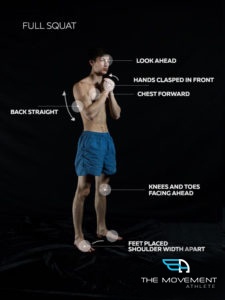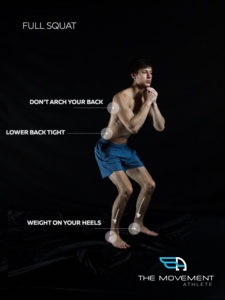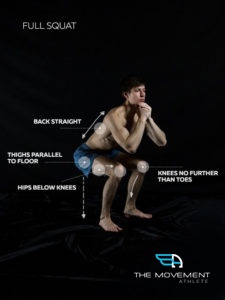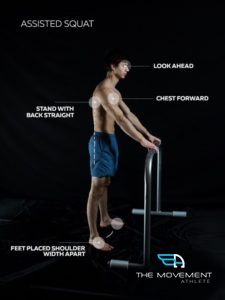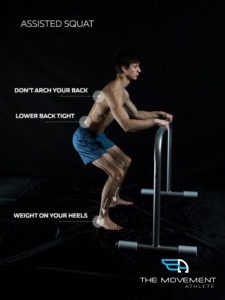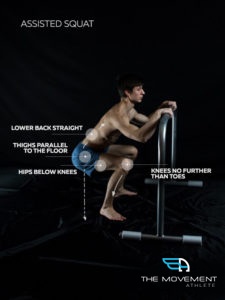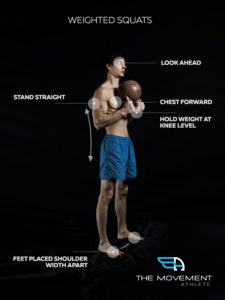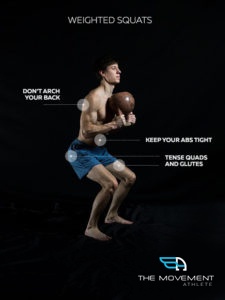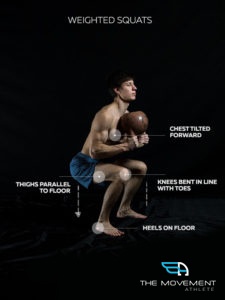Join the tribe of Movement & Calisthenics Athlete - people just like you that are working with their own body weight to get strength, lose fat build muscle, recover from injuries and live their best lives!
Squats are one of the fundamental building blocks of a good fitness routine. On the surface, they seem simple, but it’s amazing how many people just aren’t doing them right. Without proper technique you could be wasting your time—or worse, risking injury.
However, with a little bit of instruction and step-by-step directions, anyone can learn a flawless squatting technique.
So, what’s the point of squatting? If you think about it, a squat or partial squat is an essential movement in life we must all be able to perform whether you are 18 or 80 years old. Notice how many times we perform this basic move in our daily lives—from picking up a box to lifting up a child. Our ability to do this in a safe and correct manner can make the difference between getting injured and living a healthy, pain-free life.
And speaking of pain, don’t be misled by the old saying, “no pain, no gain”. Working hard at squats with proper technique will cause discomfort, but you should never feel pain. If you do, this is an indicator that you are not doing it right. Go back to basics and check your form. The only pain you should feel following squats is moderate soreness.
In order to push yourself to the next level and to learn good, sound squatting techniques, you will need to understand how to first complete a proper squat, and how not to overextend your body.
To help you with this, I’ve put together the 6 key things—the Golden Rules—that you need to know about squatting.
Rule 1: Give safe, maximal effort
The body is only able to exert a certain amount of effort with each exercise, but if you push your body beyond its limit, then you risk injuries. Your maximal effort should be your effort alone and should involve what you are able to do within reason.
Make it a point never to jerk, twist, or contort during your squats. You need to understand that these movements are not helping you. The muscles need to be work together to complete the lift. If your form is off or if the muscles are not working together, then there is more of a risk of injury.
Remember, do not get too ambitious when you first get started. Trying to progress your lifts quicker than your body can handle is a path towards injury and poor form. Being careful to progress at the right rate is not a sign of weakness. It’s a sign of strength.
Rule 2: Perfect your footing
An often overlooked, but vital, step of learning how to squat is to understand where your feet need to be to set yourself up for success. After all, the main goal in perfecting the squat is to be able to carefully lower your body and lift with swift, controlled movements. Your footing needs to be around shoulder width apart, but not too far or too close. Point your toes out to the side to get some advantage in your inner thighs and notice the difference. If you find that you are off balance at any time, drop down a level or two (e.g. If you were using a weight with your squats, consider tracking your weight and starting over). You need a solid stance and good footing before you can take your squats to the next level.
Rule 3: Start easy, avoid injury
Over the years, I have learned that keeping squats easy to start with is by far the best rule of thumb. To begin with, lower down lightly, maybe about half the way down. This will help to develop leg strength and can help you to accomplish the form you desire. If you need to further assistance as you start out, consider placing a high bench behind you, or a squat machine if you have access to one. Lastly, some find it easier to use their own body weight to learn proper form; using body weight reduces the risk of injury and can help you to hit your goals much quicker.
Box Squat is a great way to get started.
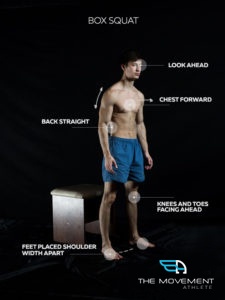
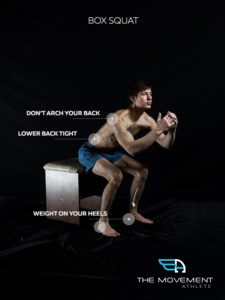
Rule 4: A little support goes a long way
Here is how to start off (see the picture shown below). Make use of a vertical pole and stand in front of it. The hands should be placed on the pole at waist height. Squat down, and once you reach the bottom point, sit down with the upper torso upright in a good posture. Your knees should be bent at a right angle at this point. If this is a tad challenging to start, then consider using more of the pole for assistance. The pole is your guide to keeping your glutes back and maintaining proper form.
Rule 5: Don’t plateau, progress
What is the ideal prescription for a squat program? Initially, it is better to start with three sets of about ten body weight squats. However, after about 7-10 days with a regular routine, it is natural for your muscles to adjust and you will need to progress in order to make gains. The following table will give you a basic idea on how to progress your squats.
| Week # | Load | Reps |
| 1. | Ten-pound dumbbell | Three sets of three reps |
| 2. | Ten-pound dumbbell | Three sets of about five reps and so on |
Rule 6: Good form is the key to success
If you wish to get the optimal results, then follow the squatting technique directions, as closely as possible. Attention to detail here will make all the difference.
- If using a weight or kettlebell, it needs to be tucked tight into the torso and tight under the chin. Need more help with this form? Look up goblet squat.
- While lowering the body, inhale. The knees should slowly bend to lower the body down.
- The glutes and hamstrings need to contract to their maximal effort, which happens during the lowering and rising phases. This will happen when you try to lower your glutes down as if you are trying to sit down on a chair.
- Once we have lowered down we need to exhale, relax, pause and then we can easily sink further down.
- Even in the relaxed mode, the torso needs to be upright in a good posture.
- Take a brief pause.
- Rise from the lowered position. Take a very brief pause, then rise from the lowered position quickly, but in a controlled manner.
- When we are rising, the thighs should be opened up slightly to an angle, or have your toes pointing out to the side.
- Do not lock your knees when you complete your squat; keep them straight, but do not lock them.
If you follow the basic forms, as described above, then squatting will become more efficient. Before you add more weight or more reps, make sure your squat form is perfect. All of us have our physical limitations and initially, it can be hard for us to move beyond them. But understanding what our own bodies can do is crucial in any exercise. Be consistent, be persistent and use your best form and best effort.
Follow the 6 Golden Rules to Squatting, and soon your squats will be paying back your patience and perseverance with great results.
Feeling inspired? Check out our Squat Assessment to see how your squats measure up.

